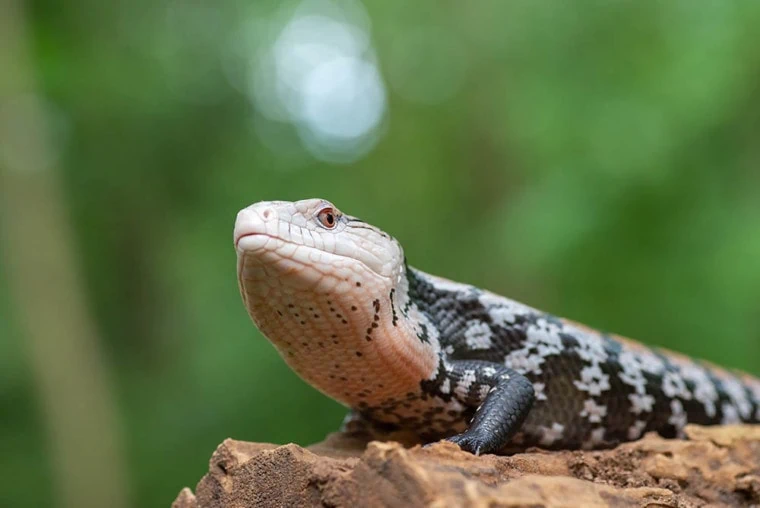
Description:
Scientific name: Tiliqua scincoides intermedia
Life span: 20 years
The common blue-tongued skink has a subspecies called the northern blue-tongued skink. The northern blue-tongued skink has very striking patterning, just like other blue-tongued lizards. Northerns often have deeper stripes along their sides and backs and a softer, creamier color on their bellies. They can also be bright orange to soft peachy orange or even yellowish in color.

Native Region/Habitat
They are indigenous to Australia and are nearly never found south of the equator.
Behavior:
NEVER keep Northern Blue-Tongues in the same home! They are fiercely protective of their territory and even hostile towards other skinks. Only DIRECT supervision should be used while putting them together for breeding, and only for brief periods of time.
Care As a pet/In captivity:
Enclosure: For long-term adult habitat, Kages Custom Reptile Enclosures (ReptileKages.com) recommends the 4 x 2 x 2 PVC enclosure or larger. There are also other good custom enclosures available. Utilize Kages pens with 6 to 8 square feet or more of floor area for each animal.
Diet: Feed Bluey Buffet by Repashy, Omni Gold by Arcadia, as well as other dog and cat meals to Blue Tongues. Also, add 50% Healthy Herp Veggies or freshly chopped greens and vegetables to adult dog diets.
Temperature: Tiliqua scincoides intermedia prefers a temperature gradient of 96oF-98oF on the warm end and 75oF-79oF on the cooler end, with a basking area of 100oF-102oF in the middle.
Table





